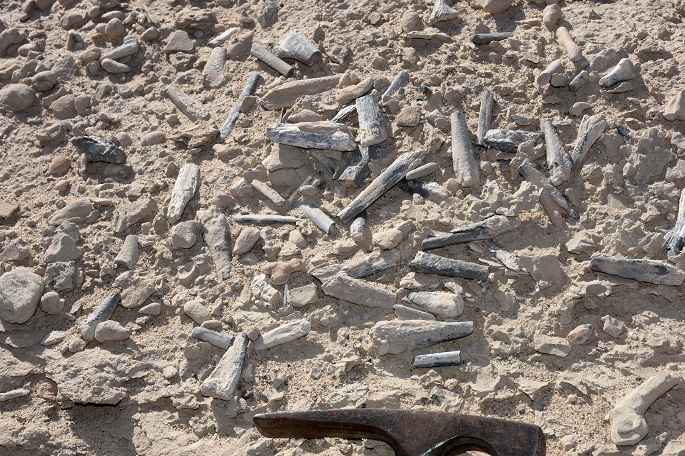200 fossilized eggs found in China reveal how pterosaurs breed
Published : 01 Dec 2017, 02:42

Over 200 three-dimensionally preserved eggs of pterosaurs have been unearthed in China, providing new insight into the life history of the rulers of the skies in the age of dinosaurs, scientists said Thursday.
"I am extremely excited and collected them very carefully," said study researcher Xiaolin Wang, a paleontologist at the Institute of Vertebrate Paleontology and Paleoanthropology of the Chinese Academy of Sciences in Beijing, recalling the discovery from the Turpan-Hami Basin located in Xinjiang in northwestern China.
The findings on the pterosaur species, known as Hamipterus tianshanensis, were published in the U.S. journal Science.
Pterosaurs were the first vertebrates to evolve powered flight and they dominated the skies during the age of dinosaurs, which spans from about 252 million years ago to about 66 million years ago.
To date, only 11 pterosaur eggs have been found, three of which have fossilized embryos inside.
Five of the eggs were also found in the Turpan-Hami Basin, where a huge lake once existed in the Cretaceous period.
Now, this sparse sample size was dramatically increased upon the discovery of the 215 Hamipterus eggs that are estimated to be 120 million years old based on the geological information.
Wang said up to 300 eggs may be present at the excavation site near the city of Hami because more appear to be buried under the exposed ones.
"The eggs are in an accumulation without a preferential orientation, clearly showing transport" caused by strong winds and storms at that time, according to the paper by Wang's team and researchers in Brazil.
"Their external surface shows cracking and crazing, and all are deformed to a certain extent, which indicate their pliable nature," the paper wrote.
"Although most eggs are complete, small fissures resulting from decomposition and compression during burial must have occurred because all eggs are filled with sandstone, which ultimately accounts for their three-dimensionality."
The large quantities of eggs, together with bones and other specimens, indicated the now extinct animals participated in colonial nesting behavior, Wang said.
More importantly, 16 of these eggs contain embryonic remains of varying intactness, representing the first time three-dimensional pterosaur embryos have been discovered.
The most complete embryo contains a partial wing and cranial bones, including a complete lower jaw, said the study.
"From our discovery, we conclude that the newborns of pterosaurs, at least Hamipterus, were likely to walk on the ground, but were not able to fly in the sky because the femur in the embryo is well developed, but the forelimbs are not well developed," Wang said.
"Hence, this pterosaur is a precocious creature, but not so precocious as previously thought, and probably needed some parental care," he said.
Based on growth marks, the team also estimated one of the individuals to be at least two years old and still growing at the time of its death, supporting the growing body of evidence that pterosaurs had long incubation periods.
"We know there are more eggs and embryos in the field, and we will spend much more time in studying this incredible pterosaur," Wang said.
In an accompanying article, Denis Deeming of University of Lincoln in Britain, touted the work as "a crucial advance in understanding pterosaur reproduction."
"Wang et al.'s study is remarkable for the number of eggs in association with adults and juvenile pterosaurs that it reports on," Deeming said.
"This finding provides support for nest-site fidelity, but as the authors suggest, this specimen does not represent the nest site itself, and many questions remain unanswered."

